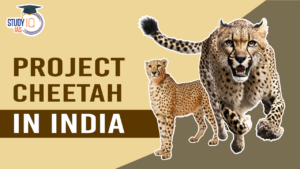About Aquaculture
- Aquaculture is the practice of farming aquatic organisms in controlled environments for commercial, recreational, or public purposes.
- It is the world’s fastest-growing food-producing sector. It produces food with a lower climate and environmental impact than other types of farming.
- Major types of Aquaculture:
- Mariculture: Cultivation of marine organisms in open oceans, enclosed sections of the sea or coastal environments.
- Freshwater Aquaculture: Farming of aquatic organisms in freshwater bodies like ponds, lakes, and reservoirs.
- Biofloc Technology:
- It is a closed tank-based fish farming approach which cleans the water in fish tanks by using beneficial bacteria (known as floc).
- Heterotrophic bacteria (such as Bacillus, Pseudomonas, Nitrosomonas etc.) are used to convert organic waste (uneaten feed and fish waste) into microbial biomass, which can then be consumed by the fish or shrimp.
- This process keeps the water clean without needing to change it often and at the same time reduces the risk of disease as well in the fish.
- Recirculating Aquaculture Systems:
- It is an intensive, high-density fish farming system that recycles and reuses water, minimising land and water usage.
- Unlike traditional open ponds, fish are raised in controlled indoor/outdoor tanks.
- The system uses mechanical and biological filtration to remove waste and maintain water quality, with only about 10% of the water replaced daily.
- Major Producers: China, Indonesia, India, Vietnam and Bangladesh.
| Facts |
|


 Bonnet Macaques: Habitat, Features, Beha...
Bonnet Macaques: Habitat, Features, Beha...
 Periyar Tiger Reserve, Map, Flora, Fauna...
Periyar Tiger Reserve, Map, Flora, Fauna...
 Project Cheetah in India, Objectives, Ch...
Project Cheetah in India, Objectives, Ch...




















